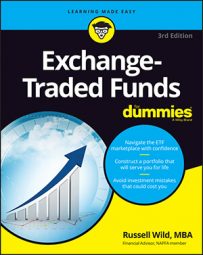Prepare yourself for the next market storm! How? The answer is fairly simple: Don’t allow any one slice of your ETF portfolio to overtake the rest. Periodically pull your portfolio back into balance.
To illustrate, imagine a simple middle-of-the-road ETF portfolio. At the start of the year, the portfolio is just where you want it to be: 60 percent diversified stocks, 40 percent bonds. But it turns out to be a banner year for stocks, and especially for small cap U.S. stocks. At the end of the year, the portfolio looks quite different:
| Beginning of Year One (In Balance) | |
|---|---|
| ETF | Percent of Portfolio |
| Vanguard Mega Cap 300 ETF (MGC) | 16 percent |
| Vanguard Small Cap ETF (VB) | 14 percent |
| Vanguard FTSE All-World ex-US ETF (VEU) | 16 percent |
| Vanguard FTSE All-World ex-US Small Cap Index ETF (VSS) | 14 percent |
| Vanguard Total Bond Market ETF (BND) | 30 percent |
| iShares Barclays TIPS Bond Fund (TIP) | 10 percent |
| End of Year One (Out of Balance) | |
| ETF | Percent of Portfolio |
| Vanguard Mega Cap 300 ETF (MGC) | 17 percent |
| Vanguard Small Cap ETF (VB) | 19 percent |
| Vanguard FTSE All-World ex-US ETF (VEU) | 18 percent |
| Vanguard FTSE All-World ex-US Small Cap Index ETF (VSS) | 15 percent |
| Vanguard Total Bond Market ETF (BND) | 22 percent |
| iShares Barclays TIPS Bond Fund (TIP) | 9 percent |
What to do? Bring things back into balance, starting with the bond position. That’s because the split between stocks and bonds has the greatest impact on portfolio risk. In this example, you need to increase the bond allocation from 31 percent back up to 40 percent. If you have a year-end portfolio of $100,000, that means you’ll buy $9,000 of BND and TIP to bring up your bond allocation by 9 percentage points.
Where will the $9,000 come from? That depends. You could sell off part of your stock position, which may be necessary given that things are pretty seriously out of balance.
But do keep in mind that selling off winning positions in a taxable account will require you to pay capital gains — and possibly a small commission on the ETF trades. So to the extent possible, try to rebalance by shoring up your losing positions with fresh deposits or with dividends and interest earned on your portfolio.

